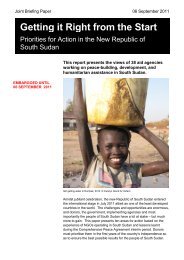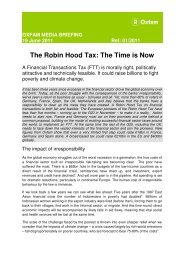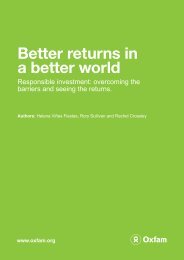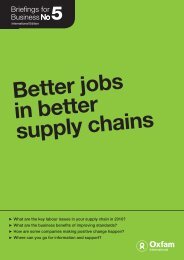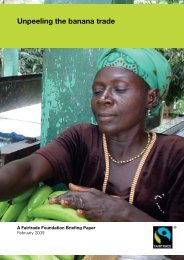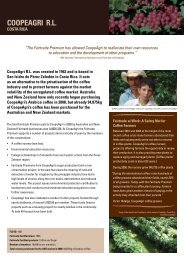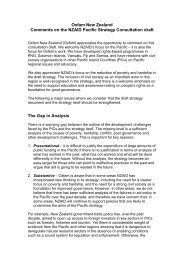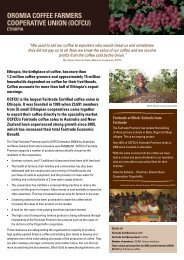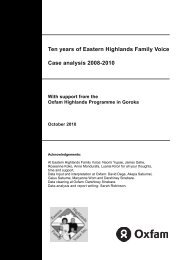Growing a Better Future - Oxfam International
Growing a Better Future - Oxfam International
Growing a Better Future - Oxfam International
- No tags were found...
You also want an ePaper? Increase the reach of your titles
YUMPU automatically turns print PDFs into web optimized ePapers that Google loves.
Figure 6: The proportion of household expenditure allocated to food, with predictions to 20302004 (baseline)602020 203050Proportion of household expenditure on food (%)403020100N America S Asia India W Africa C AfricaE AfricaDemography, scarcity and climatechange: a perfect storm scenario formore hungerPredicting the future is a hazardous endeavour. When itcomes to agricultural production and nutrition, there aremany unknowns. Yet detailed scenarios and projectionsdeveloped for this report point unequivocally towards anoverwhelming conclusion: the world faces a real andimminent risk of major setbacks in efforts to combat thescourge of hunger. 57 That risk is not a remote futurethreat. It is emerging today, will intensify over the nextdecade, and evolve over the 21 st century as ecology,demography and climate change interact to create avicious circle of vulnerability and hunger in some of theworld’s poorest countries.There are alternatives. But the central message toemerge from the scenario analysis is that theinternational community is sleepwalking into anunprecedented and avoidable human developmentreversal. Research carried out for this report explored arange of food price scenarios for 2020 and 2030 usinginternational trade models. 58 In the absence of urgentand aggressive action to tackle global warming, pricesof basic staple foods are expected to skyrocket in thecoming two decades. Using a different model thatnevertheless forecasts a similar trend, the <strong>International</strong>Food Policy Research Institute (IFPRI) has recentlycalculated that 12 million more children would beconsigned to hunger by 2050, compared with a scenariowith no climate change. 59Headline figures such as this provide only a partialpicture of the scale of threat. Over the lifetime of a singlegeneration, the world is losing an opportunity to removethe spectre of hunger from an under-five populationlarger than all of the children in that age group livingtoday in France, Germany and the United Kingdomcombined. Standing by and failing to prevent thatoutcome would represent an abdication of responsibilityand failure of international leadership without precedent;not least because this is an avoidable tragedy if – andonly if – governments act decisively in the next few yearsto avert it.Why the focus on food prices? First, because world foodprices provide a useful barometer of how the tectonicshifts in demography, ecology and climate might play outwithin the food system. Rising prices signal imbalancesin the supply response to rising demand. Second, foodprices have a major bearing on hunger because theyinfluence the capacity of poor people – and poorcountries – to gain access to calories. Of course, pricescannot be viewed in isolation: purchasing power is alsoinfluenced by income. But in many of the developingregions facing the gravest challenges with malnutrition,food still accounts for around half of average householdspending – and for an even greater share of spending bypeople living in poverty (see Figure 6). 60‘Exploring Food Price Scenarios Towards 2030’www.oxfam.org/grow<strong>Growing</strong> a <strong>Better</strong> <strong>Future</strong>Chapter 2: The age of crisis:a skewed and failing system21



